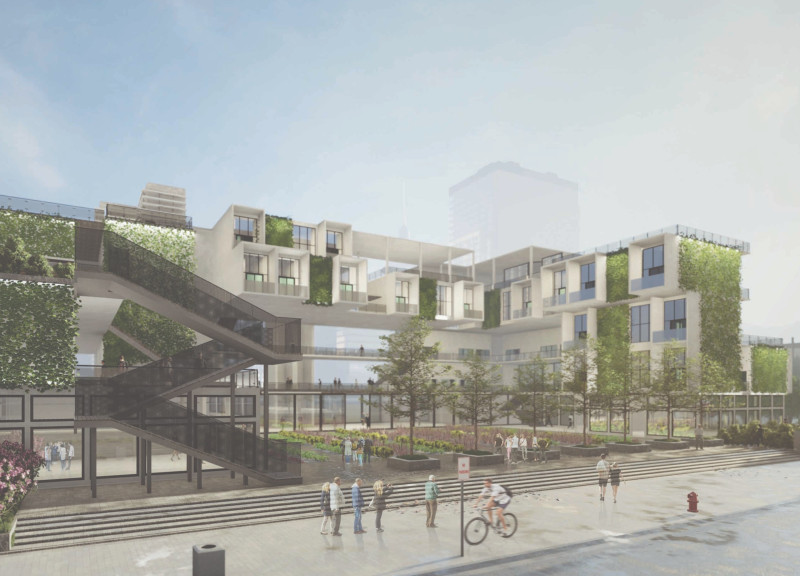5 key facts about this project
The Extension: Reinventing the Burbs focuses on reusing abandoned buildings in Brunswick, a suburban area of Melbourne. The project aims to meet the increasing need for affordable housing while enhancing the quality of life in the neighborhood. By revitalizing existing structures, it seeks to blend sustainability with community values, creating homes that address modern urban needs.
Modular Design Approach
The design employs a modular system arranged in a Tetris-like manner. This approach allows for flexibility in the layout of living spaces. By preserving foundational elements, columns, and usable floor plates, the project minimizes waste and reduces construction costs. It addresses the urgent demand for housing without compromising on quality.
Natural Light and Ventilation
Maximizing natural light and airflow is crucial for enhancing living conditions. The design carefully subtracts elements from modules and floor plates to improve light penetration and ventilation. This focus on environmental quality creates healthier spaces for residents. Additionally, vertical gardens are included, adding greenery to the buildings and improving the overall aesthetic.
Community Engagement and Urban Farming
Community interaction is a key element of the design, highlighted by the inclusion of urban farming initiatives. These shared spaces provide residents with fresh produce and encourage social connections. The intention is to create a community atmosphere that fosters collaboration and engagement among occupants, resulting in a vibrant neighborhood.
Material Selection
Materials in the design include sheet metal for support, precast components for efficient construction, concrete slabs for strength, and finishes that enhance the visual appeal. Each material is selected based on its performance and contribution to sustainability goals, ensuring that the buildings are both functional and environmentally friendly.
The design incorporates green terraces that connect indoor living spaces with the outdoors. These terraces not only provide residents with opportunities for relaxation and gardening but also enhance the building's relationship with its surroundings.



















































